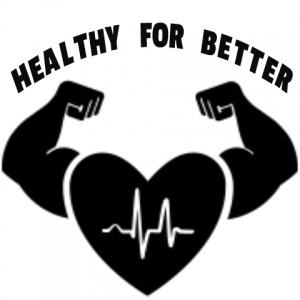Stress is a big part of life today. But, what if you could feel better by just breathing? Indeed, Breathing Techniques for Stress Relief could be the answer. They are old but proven by science. These methods can make you feel calm inside.
When you breathe deep, you are not just breathing air. You are filling yourself with calm. This simple act can bring peace. And it does not need any special things. Just breathe, and let stress go away. It's like finding a quiet spot just for you.
Let these breathing methods be part of your everyday life. They make you ready to face anything. With every breath, feel strong knowing you can manage stress. It’s about changing how stress affects you. You learn to be stronger.
Key Takeaways
- Regular Breathing Techniques for Stress Relief make you peaceful in stressful times.
- Using Calming Practices is a simple way to feel better fast.
- You don’t need much time to use Relaxation Techniques effectively.
- Deep breathing makes your mind and body work together better.
- Daily mindful breathing is good for your mind and body.
- With breathing, you can be happier and healthier overall.
Understanding Stress and the Power of Breathwork
In today's fast world, knowing how to manage stress is super important. Knowing how breathwork helps control stress is key to living a healthier life.
Recognizing the Signs of Stress in Your Body
Our bodies show stress in clear ways. symptoms like a fast heartbeat, tense muscles, and bad breathing warn us. It's key to notice these signs early to start relaxation exercises.
The Science Behind Breathing and Relaxation
Science shows controlled breathing really helps reduce stress. Moving from fast chest breathing to deep breaths is good for us. It tells our body to calm down. Here, mindfulness techniques and breathing exercises are useful. They help our bodies relax.
| Stress Symptom | Breathwork Response | Outcome |
|---|---|---|
| Rapid Heartbeat | Diaphragmatic Breathing | Reduced Heart Rate Variability |
| Muscle Tension | Progressive Relaxation | Muscle Ease |
| Shallow Breathing | Paced Breathwork | Improved Respiration |
Using breathwork methods everyday can really change how we deal with stress. Doing these practices often helps our body stay calm and balanced, even when stressed.
The Foundational Breath: Diaphragmatic Breathing Explained
Diaphragmatic Breathing is key for less stress, linking mind and body. It brings a calm feeling right away, making it a strong way to relax. Let's look at how to do it every day to stay well.

Mastering the Belly Breath for Immediate Calm
Breathing into your belly, you let your diaphragm work best. This makes your lungs take in more air. Deep breaths like this make you feel calm quickly.
Practicing Consistency: Integrating Breathwork into Your Routine
Using this breathing every day is key. It helps your body remember to breathe this way when stressed. Doing it a lot helps with stress now and makes you better over time.
Making this breathing a main part of self-care is smart. It’s an easy way to deal with stress better. Keep doing it to make this a habit for a happier life.
Breathing Techniques for Stress Relief: Practices to Calm the Mind and Body
When you start to feel overwhelmed by life, it's essential to know some breathing techniques for stress relief. These mindfulness techniques and relaxation exercises are not just quick fixes. They build a base for lasting calm and a smart way to handle stress management. Techniques like rhythmic breathing, relaxing each muscle one by one, and doing Lion’s Breath can change how you deal with stress. They help both your mind and body.
Rhythmic breathing makes your mind and body work together. It's easy but very effective. Just breathe in for four counts, hold it, and then breathe out for four counts. This method helps fix the uneven breathing that happens when you're stressed.
Rhythmic breathing works like a metronome for the soul, keeping a steady beat in the busy world.
Adding exercises that relax your muscles helps fight stress even more. This method connects how your body feels to how calm your mind is. It's a full package for relaxation.
- Calming Practices: Start by focusing on breathing, then make each muscle group tight and release it.
- Stress Management: Tense and relax muscles while breathing out to lower stress hormone levels and calm down.
- Mindfulness Techniques: Pay attention to how each muscle feels, focusing on the here and now.
Lion’s Breath is also energizing. You take a deep breath in and then exhale hard, making a sound like a lion. This is great for quick stress relief. Lion’s Breath does more than ease stress. It wakes up your whole body and makes you more alert and focused.
| Technique | Breath Pattern | Benefits |
|---|---|---|
| Rhythmic Breathing | Equal duration of inhalation/exhalation | Harmonizes mind-body connection |
| Progressive Muscle Relaxation | Deep breathing with concurrent tension-release of muscles | Reduces physical and mental tension |
| Lion’s Breath | Deep inhalation, forceful exhalation | Clears mental fog, revitalizes energy levels |
Making these breathing techniques for stress relief a part of your life can really make a difference. Every breath out brings calm, and every breath in brings new focus. Use these methods to find peace. They will help you live a more balanced and mindful life.
Unlocking the Benefits of Deep Breathing Exercises
In a world full of stress, we have a strong tool: deep breathing exercises. These simple practices are great for managing stress. They help us find peace and connect our mind and body with life's rhythm.
How Deep Breathing Affects Your Brain and Nervous System
Deep breathing does wonders for our minds. It turns on the calm system in our body, lowering stress. This helps us feel less anxious and more at peace.
Deep Breathing as a Tool for Energy and Focus
Breathing techniques for stress relief do more than relax us. They make us feel alive and focused. By breathing deeply, we fill every day with energy and clear thinking.
| Deep Breathing Benefit | Physiological Effect | Emotional Impact |
|---|---|---|
| Lowered Anxiety | Decreased Heart Rate | Increased Calmness |
| Improved Focus | Optimized Oxygen Exchange | Elevated Clarity of Thought |
| Boost in Energy | Stimulation of Parasympathetic Nervous System | Heightened Mental Alertness |
| Balanced Mind and Body | Enhanced Cognitive Function | Emotional Regulation |
Using deep breathing exercises is like having a superpower. These practices bring us calm and help us do well in life. Deep breaths remind us of our inner strength and beauty.
Rhythmic Breathing for Harmony: Equal Breathing Technique
The Stress Reduction Practices include Equal Breathing Technique. It matches the time you breathe in with the time you breathe out. You can start with breathing in and out for five counts. Then, increase to ten counts or more when you're ready.

This method is built on Relaxation Techniques. It's like a personal concert with your breath as the music. It brings calm and focus to your mind and body. This approach is open to all, offering a way to find peace every day.
Amidst the ebb and flow of existence, Equal Breathing stands as a beacon of steadiness.
The beauty of Breathing Exercises like Equal Breathing is their flexibility. You can do it in the quiet morning or during a busy afternoon. It helps create a moment of peace, using the breath to find balance.
Regular practice of this technique brings a deep peace. It slowly surrounds you, leading to a calm state. Equal Breathing shows the power of our basic act of living—breathing.
Combating Anxiety with Progressive Muscle Relaxation
If you need Anxiety Relief or help with Stress Management, try Progressive Muscle Relaxation. It's a way to loosen up and find peace. You'll do Relaxation Exercises that help your mind and body work together better.

Guiding Your Body Through the Tension-Release Journey
Progressive Muscle Relaxation is like a journey. It helps you notice where you're tight. When you tense and then relax your muscles, you learn what stress feels like.
Step-by-Step Muscle Relaxation for Anxiety Relief
There are simple steps to follow with Progressive Muscle Relaxation:
- Make sure you're in a quiet place without interruptions.
- Begin with deep breaths to get your body ready to relax.
- Tighten and then relax your muscles, starting with your feet and moving up.
- Pay attention to how different tension and relaxation feel.
- Go through each muscle group until you reach your face.
- End with a quiet moment, taking deep breaths and feeling completely relaxed.
Doing these steps regularly helps you feel calm right away. Over time, it makes you better at handling stress.
| Muscle Group | Tension Duration | Relaxation Cue |
|---|---|---|
| Feet | 5 seconds | Breathe out, release |
| Calves | 5 seconds | Breathe out, release |
| Thighs | 5 seconds | Breathe out, release |
| Abdomen | 5 seconds | Breathe out, release |
| Chest | 5 seconds | Breathe out, release |
| Arms | 5 seconds | Breathe out, release |
| Shoulders | 5 seconds | Breathe out, release |
| Neck | 5 seconds | Breathe out, release |
| Face | 5 seconds | Breathe out, release |
This table helps you have a total relaxation session. It teaches you to manage stress better and keep your mind calm.
Revitalizing Mind and Body with the Lion’s Breath
The Lion’s Breath is a special Breathwork Method. It stands out because it is very active. It uses Relaxation Techniques to calm our minds and hearts. Using Lion's Breath can really help us feel better.

It starts with sitting still and breathing deeply. Then, you breathe out strong and make a sound. Roaring like a lion relaxes your face and jaw. It also makes your heart work better.
When we feel stuck and tight, Lion’s Breath helps us let go. It's not just about your body. It lets you let go of heavy feelings too. It's a helpful way to Relax.
Here's how to start with this helpful practice:
- Sit in a way that feels good, with your back straight.
- Breathe in deep through your nose, getting ready to roar.
- Open your mouth wide, stick out your tongue, and roar out loud.
- Do this a few times. Let the loud breaths help you relax.
This table shows how Lion's Breath is good for you:
| Aspect of Wellness | Impact of Lion's Breath |
|---|---|
| Mental Stress Relief | Clears the mind and alleviates mental fatigue |
| Emotional Balance | Facilitates emotional release and catharsis |
| Physical Tension | Relaxes facial and jaw muscles, reducing physical stress |
| Cardiovascular Health | Stimulates an increase in heart rate and improves circulation |
The Lion’s Breath tackles stress in many ways. It’s key to do it thinking and focusing on each step. This will help you get all the good effects of this Breathwork Method.
Add Lion's Breath to your Stress Reduction routine. It helps you find peace and give you more energy. This old practice boosts the joy and quality of life.
Breath Regulation for Peace: The 4-7-8 Method
The way you breathe can change how you feel stress and calm. The 4-7-8 Method is like a light for finding peace. It uses a special way to control breathing that helps your mind and body deal with life's pressures.

Slowing Down Time: Breathing for Stress Relief
The 4-7-8 Method is not just a break. It's more like a way to slow time. This method helps people feel less stressed. By changing how you breathe, it makes you deeply relaxed. It seems as if time stretches, bringing peace.
Creating a Relaxing Ritual with the 4-7-8 Technique
Using the 4-7-8 Method daily can turn a busy day calm. It is key for reducing stress and increasing mindfulness. It's a dependable ritual that eases daily stress. It also helps get your mind ready for sleep.
“In practicing the 4-7-8 breathing, we turn the breath into a metronome of tranquility, marking time not in seconds, but in moments of calm.”
See the table below for steps on the 4-7-8 Method. It's a strong part of your relaxation routine:
| Step | Description | Duration | Effect on Body and Mind |
|---|---|---|---|
| Inhale | Take a deep, steady breath through your nose. | 4 counts | Fills the lungs with oxygen, starting calming of the nervous system. |
| Hold | Keep the breath held gently, without strain. | 7 counts | Helps oxygen go all around, making the body fully relaxed. |
| Exhale | Release the breath slowly and fully through your mouth. | 8 counts | Helps with releasing stress and finding peace. |
If you're new to relaxing methods or want to better manage stress, try the 4-7-8 Method. Its simple yet deep effect is why many people love it among different mindfulness techniques.
Calming the Storm: Mindfulness and Focused Breathing
Mindfulness breathing exercises help us handle life's challenges. They focus on breathing to manage stress. These methods make a stressful day calm and intentional.
A Mindful Approach to Stress Management
Mindfulness means paying attention in a kind way, moment by moment. Breathing mindfully helps us stay calm. It makes our minds clearer and more ready to respond well.

The Art of Single-Pointed Breath Focus
Single-pointed breath focus means paying close attention to our breathing. We notice the air moving or our chest rising. With practice, this helps us handle stress better.
Mindfulness and focused breathing together make a great tool for relaxation. They help us find peace in tough times. This skill makes us strong and graceful under stress.
Conclusion
We found many breathing exercises to help us feel calm. They are key in our fight against stress. They are easy to do anywhere and work well.
By doing these, we gain control over our stress. We learn to find peace quickly. This helps keep our mind and body balanced.
Using mindfulness techniques makes us focus on the moment. It teaches us the deep effect of breathing well. By practicing deep breaths, we can handle stress better. This keeps us calm even when things around us are not.
Also, doing progressive muscle relaxation helps our bodies and minds relax. It shows how our body and mind are connected. These exercises use science to help us find inner peace. They make our lives healthier and more balanced long-term.


